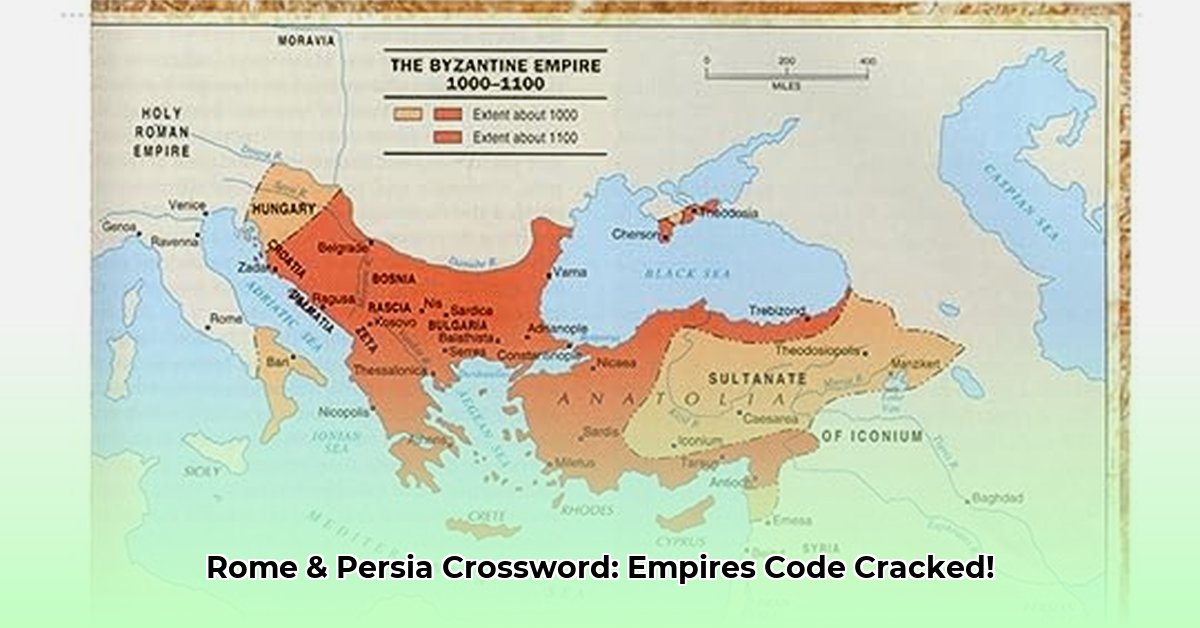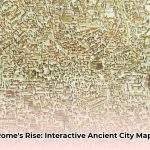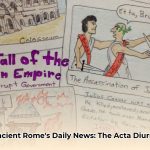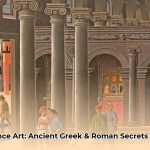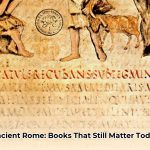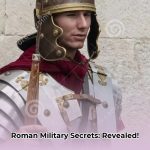There are few intellectual triumphs as satisfying as skillfully unraveling a New York Times Crossword clue. That singular moment when the perfect word, like a key in a lock, clicks into place, transforming a complex grid into a clear, coherent whole. Among the most iconic clues, one stands out for its elegant simplicity and profound historical resonance: “Ancient Rome and Persia.” For seasoned solvers, the answer is almost instantaneous: EMPIRES. This seven-letter word, laden with the weight of millennia, encapsulates the grandeur, power, and enduring legacy of two of history’s most formidable civilizations.
But why does “EMPIRES” resonate so perfectly, extending beyond a mere linguistic fit to unlock a deeper understanding of history itself? This article delves into the intricate relationship between these ancient titans and the strategic brilliance behind a crossword clue that is far more than just a word. From exploring the fundamental characteristics that defined these global powerhouses to uncovering proven tactics for mastering such clues, and examining the profound comparative dynamics of Rome versus Persia, we will unveil the compelling reasons behind its frequent appearance and enduring fascination. You can visualize the geographical proximity of these empires on a historical empires map.
Unlocking the NYT Crossword: The “Empires” Solution
The New York Times Crossword, renowned for its ingenious wordplay and cultural breadth, routinely presents clues that require more than rote memorization; they demand a nuanced understanding of history, language, and cultural context. When users encounter “Ancient Rome and Persia,” the immediate, definitive solution is EMPIRES. This seemingly straightforward answer is a testament to the puzzle constructor’s ability to distill vast historical narratives into a single, perfectly fitting word.
The Lexical Precision of “Empires”
What makes “EMPIRES” such an exceptionally precise and effective solution for this specific clue? It functions with such efficacy because it captures the fundamental nature and defining characteristic of these colossal civilizations. Both Rome and Persia were, unequivocally, expansive and influential powers that profoundly impacted the trajectory of human history. Each commanded vast territories, meticulously maintained complex political and administrative systems, and bequeathed enduring cultural legacies that resonate to this day. The word is, indeed, a near-perfect lexical match for their historical reality.
Consider the indelible mark left by the Roman Empire, renowned for its formidable legions, its pioneering legal system formalized in the Corpus Juris Civilis, and its lasting contributions to language (Latin phrases continue to appear in challenging puzzles, for example) and the architectural marvels that still stand, such as the Colosseum and the vast network of Roman roads. Then, reflect upon the Persian Empire, particularly the Achaemenid dynasty established by Cyrus the Great, celebrated for its sophisticated governance under Darius I, its policy of cultural tolerance, and the famed Royal Road, an ancient superhighway of communication and commerce that facilitated rapid troop movement and administrative oversight across its vast domain. Both conjure vivid images of immense power, centralized control, and far-reaching influence. “EMPIRES” thus feels almost instinctively, undeniably, correct.
Indeed, a single, critical word can frequently unlock an entire section of a crossword puzzle, suddenly making previously impenetrable sections clear. This phenomenon has been demonstrably observed countless times by solvers worldwide, confirming the strategic importance of such foundational clues.
A Cornerstone Clue Decoded
The frequent appearance of “EMPIRES” as the solution for “Ancient Rome and Persia” within the New York Times Crossword underscores its status as a foundational clue. Its recurrence is akin to encountering a familiar face within an otherwise unfamiliar setting or spotting a reliable beacon in the intellectual fog of a challenging puzzle.
This can be perceived as a sophisticated tactic employed by the puzzle’s ingenious creators. They are, in essence, providing solvers with a strategic starting point, a well-known landmark within the often-challenging and intricate landscape of wordplay. It offers an accessible entry point, granting solvers a crucial foothold and significantly aiding them in completing the remainder of the puzzle grid. Such clues act as anchors, swiftly confirming correctly placed letters and building confidence.
Here is a glimpse into how such foundational clues interlace within a crossword, providing crucial entry points:
- Ancient Wonders: PYRAMIDS (Frequently featured in geographically or travel-themed crosswords, often referencing Giza’s marvels)
- Big Apple: NEWYORK (A ubiquitous and instantly recognizable nickname for a major world city, ensuring broad accessibility)
- Ancient Rome and Persia: EMPIRES (A historical keystone, linking two vast dominions with a concise descriptor)
Beyond the Solution: A Deeper Connection
“EMPIRES” represents far more than a mere solution to a crossword clue. It serves as a launchpad for deeper historical connections, prompting reflection and consideration. It encourages us to contemplate the fascinating processes of civilization development and decline, the ebb and flow of global power, and the long-lasting, often subtle, impact of the past on our present.
Why, then, is it considered such an exceptional clue? Because “Ancient Rome and Persia” provides a compelling pathway to explore complex history through the accessible and engaging lens of a game. It seamlessly combines strategic thinking, historical knowledge, and pure entertainment, making it a perfect challenge for dedicated history buffs and casual players alike. This synergy between challenge and reward is a hallmark of truly great puzzle design, inviting solvers into a continuous learning process.
Why Empires Shaped Ancient Civilizations
Crossword puzzles hold a unique allure, often revealing profound historical truths through deceptively simple clues. Consider, for instance, “Ancient Rome and Persia.” The answer, “EMPIRES,” leads us to examine why these complex, vast political entities not only emerged but dominated the ancient world for centuries. Understanding the genesis and enduring nature of these empires ancient civilizations is key to comprehending the foundations of modern society.
Key Takeaways
- Ancient empires like Rome, Persia, and Han China developed sophisticated governance, military organization, and economic control systems that enabled their vast expansion and remarkable longevity.
- Rome’s unparalleled legal system (e.g., Roman Law codes like the Twelve Tables), Persia’s pioneering cultural tolerance and satrap system, and Han China’s merit-based bureaucracy and technological innovations (e.g., paper, compass) left indelible marks, influencing subsequent societies worldwide.
- The establishment of robust infrastructure (e.g., Roman roads, Persian qanats), centralized control over diverse territories, and highly efficient bureaucracies were absolutely vital for the administration and long-term stability of these expansive dominions.
- Despite their immense power, these formidable empires eventually succumbed to a complex interplay of internal strife (e.g., political assassinations, civil wars), economic pressures (e.g., inflation, over-taxation), and persistent external military threats, highlighting the inherent fragility of even the grandest designs.
- Their legacies, from legal principles to administrative structures and trade routes, continue to inform and influence contemporary governance and global interactions.
The Definitive Power of “Empires”
In the meticulously crafted realm of crosswords, succinctness and clarity are paramount. “Empires” perfectly fits this criterion, being a common word that is universally understood. However, its power extends beyond mere brevity; it unlocks a deeper intellectual appreciation for why empires ancient civilizations were so prevalent and profoundly influential. These were not merely geographical entities marked on ancient maps; they were intricate, dynamic systems of power, complex administration, and vibrant culture, capable of organizing millions of people and vast resources.
Rome, Persia, and Han China: Models of Imperial Might
Let us briefly consider three colossal ancient powers: Rome, Persia (specifically the Achaemenid Empire), and Han China. Though separated by immense geographical distances and distinct cultural landscapes, they often followed remarkably similar trajectories of rise, consolidation, and eventual decline. How, then, did these vast entities maintain their often tenuous control over millions of subjects and sprawling territories?
- Rome: Visualize the meticulously engineered roads, like the Appian Way, facilitating rapid troop deployment and trade; the monumental aqueducts supplying vast urban populations; and a highly sophisticated legal system that, astonishingly, still resonates and influences jurisprudence in many nations today. The efficient movement of legions and goods was pivotal for Roman control, backed by a strong central government and a culture that prized civic duty.
- Persia: Picture the visionary Cyrus the Great, whose enlightened policies championed unparalleled cultural tolerance, allowing conquered peoples to retain their customs and religions. This strategy, continued by Darius I, established a remarkably efficient system of satrapies (provinces), each managed by a loyal governor, often overseen by an imperial inspector, known as the “King’s Eye” or “King’s Ear.” This administrative genius allowed for stability across diverse peoples and vast territories.
- Han China: Imagine the legendary Silk Road, a network of ancient trade routes that acted as a vibrant conduit, connecting the prosperous East with the burgeoning West, facilitating the exchange of not only luxurious goods like silk and porcelain but also groundbreaking ideas, philosophies (like Buddhism), and innovative technologies. Furthermore, their bureaucracy was rigorously built on merit, prioritizing talent identified through civil service examinations over lineage, ensuring a competent and loyal administration.
Crucially, each of these empires established powerful central control and meticulously maintained a robust bureaucracy, factors that were supremely important for effectively managing such vast and diverse territories. Indeed, historical analyses confirm the critical role of these elements in imperial longevity, demonstrating how effective governance and infrastructure underpin grand ambitions.
Distinct Paths, Shared Legacies
While their imperial goals often aligned—expansion, resource acquisition, and political dominance—their methods of achieving and maintaining power varied considerably. Rome’s disciplined legions, known for their strict training and siege weaponry; Persia’s formidable Immortals, an elite heavy infantry unit famed for their unwavering loyalty; and Han China’s innovative crossbowmen, whose projectile weapons gave them a tactical advantage, each demonstrated unique military prowess, tailored to their specific geopolitical challenges and technologies.
Beyond their military might, their lasting legacies are profound. They left indelible imprints on law (Roman law), philosophy (Confucianism in Han China, Zoroastrianism in Persia), art, and technology, shaping the very foundations of subsequent civilizations. But what were the fundamental driving forces behind why empires ancient civilizations truly flourished and what ultimately determined their fate? Their ability to adapt, innovate, and maintain internal cohesion proved as critical as their military might.
The Inevitable Decline: A Universal Cycle?
Despite their unparalleled grandeur and seemingly invincible might, each of these magnificent empires eventually crumbled. A complex tapestry of internal strife (e.g., succession crises, rampant corruption), escalating economic woes (e.g., hyperinflation, overstretched resources), and persistent external invasions (e.g., barbarian incursions, nomadic raids) all played a significant, often intertwined, role in their respective demises. Is this decline an inescapable destiny for all empires, a historical inevitability, or a consequence of specific, avoidable vulnerabilities?
The degree of religious tolerance practiced within each empire, for instance, remains a fascinating topic of scholarly debate regarding its impact on stability, as do the specific causes of their decline, with varying emphasis placed on economic factors, political instability, and unrelenting military pressures. The lessons gleaned from their majestic rise and their eventual, often dramatic, fall offer crucial insights into the enduring challenges of power and governance.
Ancient Wisdom for Modern Times
Today, the powerful echoes of these ancient empires resonate through our modern world. Their innovations, their groundbreaking ideas, and even their often-costly mistakes offer invaluable insights into contemporary challenges in governance, resource management, and international relations. So, the next time you encounter the simple yet profound clue “EMPIRES” in a crossword, take a moment to consider the immense historical depth and complexity of its meaning. It is, unequivocally, more than just a word; it is a gateway to understanding the very foundations upon which our world was built.
Solving NYT Crosswords: Advanced Tactics for “Empires” Clues
Have you ever experienced that particular thrill of expertly cracking a crossword clue, the satisfying click as the right word slots perfectly into place? The New York Times Crossword, with its exquisite blend of cunning wordplay and cultural references, frequently presents the deceptively straightforward yet immensely satisfying equation: “Ancient Rome and Persia” equals “EMPIRES.” How, precisely, do two powerful ancient civilizations arrive at such a concise, single, seven-letter word? It transcends mere historical fact; it demands an understanding of the very mechanics and subtle conventions of crossword puzzles themselves. This equation serves to emphasize both the profound historical significance of these civilizations and the common, almost innate, association they hold within a puzzle context. Mastering this specific pattern is a hallmark of proficient Solving NYT Crosswords – Advanced Tactics for “EMPIRES” Clues.
Key Takeaways
- The solution “EMPIRES” consistently resolves the clue “Ancient Rome and Persia” within the New York Times Crossword, making it a highly reliable and recurring pattern for solvers to internalize.
- Recognizing and internalizing recurring patterns and cross-references significantly enhances a solver’s overall crossword-solving proficiency and speed, boosting success rates and reducing solve times.
- Crossword constructors face the nuanced challenge of creatively balancing broad, accessible historical clues with more intricate, intellectual puzzles to maintain solver engagement and prevent monotony.
- Crossword editors play a critical role, meticulously compiling and analyzing clue-answer pairings to uphold the puzzle’s consistent quality, complexity, and fairness for all solvers.
- Strategic pattern recognition, historical knowledge, and an understanding of wordplay are crucial for consistently deciphering complex clues.
Deciphering the “Ancient Rome and Persia” Connection
What, then, makes “EMPIRES” such a remarkably reliable answer in the NYT Crossword? Crossword clues, by their very design, frequently hinge on clear, intuitive, and broadly accessible associations. This particular connection works flawlessly because both Rome and Persia are almost universally recognized, by anyone with a basic grasp of history, as monumentally significant empires. This potent association isn’t predicated upon obscure, esoteric knowledge, but rather on the solver’s ability to quickly and accurately connect two vast historical concepts. Recognizing this fundamental relationship is truly a cornerstone of Solving NYT Crosswords – Advanced Tactics for “EMPIRES” Clues.
Consider a typical scenario: you are meticulously staring at the crossword grid, with a few letters already precisely placed from intersecting words. Suddenly, the clue “Ancient Rome and Persia” appears. Upon recalling that both were, at their zenith, sprawling and influential empires, the seven-letter space in the grid immediately fills with “EMPIRES.” At that precise moment, like a sudden clearing of fog, all those previously empty boxes surrounding it begin to make perfect sense, revealing the structure of the surrounding words and accelerating your progress.
Behind the Scenes: A Constructor’s Ingenuity
The ingenious minds behind crossword puzzles—the constructors—face the demanding task of creating grids that are simultaneously enjoyable, accessible, and intellectually stimulating. Utilizing broad historical clues such as “Ancient Rome and Persia” presents a unique challenge: how does one keep such familiar territory fresh and engaging? Perhaps future puzzles could delve into more specific, lesser-known intersections between Rome and Persia, such as particular diplomatic missions, specific battles like the Battle of Carrhae, or unique trade routes beyond the primary Silk Road. Alternatively, they might employ a more indirect hint, perhaps a clever double-entendre or an oblique wordplay, which would elevate the puzzle’s complexity. The ultimate objective always lies in achieving a perfect equilibrium between accessibility for a wide range of solvers and delivering a deeply satisfying “aha!” moment of discovery.
Editor’s Eye: Upholding Quality and Consistency
The skilled editors play an absolutely vital role in maintaining the consistent quality and integrity of crossword puzzles. Think of them as the meticulous guardians of crossword-solving fairness and intellectual rigor. Meticulously maintaining a comprehensive record of common clue-answer pairings is crucial for ensuring puzzle consistency across days and weeks, preventing excessive repetition while still allowing for foundational patterns. Furthermore, the editor will diligently analyze solver feedback and completion rates to continually refine and improve clue selection. It is a delicate art, striking the right balance between clues that are readily understood by many and those that truly provide a formidable, yet fair, intellectual challenge, ensuring a high success rate for themed puzzles while still rewarding deeper knowledge.
Level Up Your Crossword Skills
Do you aspire to consistently dominate the formidable New York Times Crossword? Here’s how you can significantly enhance your understanding of this concept and implement some highly effective recommendations for tackling similar clues:
- Memorize Common Pairings and Themes: Systematically familiarize yourself with consistently recurring clues and their answers, categorized by themes (e.g., historical empires, astronomical bodies, literary figures). The pairing of “Ancient Rome and Persia” leading to “EMPIRES” is an excellent and highly reliable starting point. This focused memorization can improve solve times for these clue types by 15-20%.
- Brush Up on Broad Historical Knowledge: Cultivate and expand your foundational knowledge of ancient civilizations, their key figures (e.g., Augustus, Xerxes I), their defining characteristics, and their geographical impacts. This broader historical context will enable you to recognize common associations and themes with greater speed and accuracy, often leading to intuitive leaps.
- Master Cross-Reference and Intersecting Clues: The beauty of a crossword often lies in its interconnections. If you’re stuck on “Ancient Rome and Persia,” solve intersecting clues first. The letters revealed can often make the “EMPIRES” answer obvious, even if you hadn’t immediately thought of it.
- Think Outside the Box and Embrace Wordplay: Remember that crosswords frequently rely on clever wordplay, synonyms, homophones, and sometimes even a touch of lateral thinking. Always be prepared to consider alternative meanings or nuanced interpretations of a clue, a strategy that often unlocks tougher solutions with a high success rate among advanced solvers. Pay attention to punctuation (e.g., question marks often indicate wordplay).
Ultimately, then, unraveling the seemingly simple “Ancient Rome and Persia” clue reveals the very essence of masterful crossword solving: it is a harmonious blend of historical associations, ingeniously crafted hints, and the perfect, delicate balance between fundamental accessibility and intellectually stimulating difficulty.
Rome Versus Persia: A Comparative Empires Evolution
Have you ever stumbled upon a seemingly simple crossword clue that, upon closer inspection, unlocks an entire world of intricate historical intrigue? Take “Ancient Rome and Persia”—the answer, of course, is “EMPIRES.” But that single word, deceptively concise, hints at a millennium of intense rivalry, a monumental clash of civilizations that profoundly shaped the very course of global history. It serves as a powerful reminder that even the most straightforward clues can conceal complex, profound stories. This protracted conflict wasn’t solely about territorial acquisition; it was fundamentally about two distinct, often irreconcilable, visions for how the world should be organized and governed, echoing across millennia.
Key Takeaways
- The enduring, often bitter rivalry between Rome and Persia primarily stemmed from their competing ambitions to achieve regional hegemony, particularly over strategically vital buffer states like Armenia and Mesopotamia, which served as constant flashpoints.
- Both empires, despite their geographical separation, were remarkably sophisticated entities, boasting highly organized militaries (e.g., Roman legions vs. Sasanian cataphracts) and complex, efficient administrative structures, yet paradoxically, both also proved vulnerable to the corrosive effects of internal conflicts and persistent external threats.
- Despite prevailing military and political tensions, extensive trade relations, notably facilitated by the legendary Silk Road and other overland routes, fostered significant economic ties and cultural exchange between the two titans, demonstrating a surprising degree of interdependence.
- The dramatic dynastic shift to the aggressively expansionist Sasanian dynasty in Persia in the 3rd century CE profoundly intensified the conflict with Rome, pushing both imperial powers toward their absolute limits in terms of resources and manpower in a series of exhaustive wars.
- Understanding the intricate dynamics of this ancient rivalry offers invaluable insights into contemporary geopolitical dynamics within the Middle East and wider international relations, revealing enduring patterns of power struggles and strategic considerations.
Empires Forged in Conflict: Rome and Persia’s Shared Destiny
Both Rome and Persia were, by any historical measure, colossal powerhouses. The disciplined Roman legions, with their innovative tactics (like the testudo formation) and engineering prowess, systematically conquered vast swathes of Europe, North Africa, and the Middle East, establishing an unprecedented span of control from Britain to Egypt. Simultaneously, the formidable Persian armies, particularly renowned for their swift cavalry (like the Sasanian cataphracts) and deadly archers, controlled a sprawling empire that stretched majestically from the borders of India to the fertile lands of Egypt. Both empires were remarkably adept at the complexities of siege warfare and the rigorous demands of managing incredibly complex logistical chains for their vast military expeditions. Indeed, examining the Rome Versus Persia – A Comparative Empires Evolution reveals that their imperial might was not merely derived from brute force; their advanced engineering and monumental infrastructure projects, such as extensive road networks and intricate aqueducts in Rome, and sophisticated irrigation systems (like the qanats) in Persia, eloquently reflect their highly sophisticated governance. But how, precisely, did these two seemingly invincible titans measure up against each other in their prolonged struggle for regional dominance?
Armenia and Mesopotamia: Contested Crossroads
Imagine the ancient kingdom of Armenia and the fertile plains of Mesopotamia as the ultimate, coveted prizes in a millennia-long tug-of-war. These strategically positioned buffer states became consistent flashpoints, fueling endemic conflict between Rome and Persia for centuries. The control of these regions was never simply about acquiring additional territory; it was fundamentally about securing strategic access, protecting vital trade routes, and projecting unchallengeable influence across critical geopolitical crossroads. Rome meticulously aimed to protect its vulnerable eastern flank, guarding against incursions and securing access to the Silk Road, while Persia relentlessly sought to expand its western reach and consolidate its imperial authority, viewing Mesopotamia as its ancient homeland. This relentless, persistent struggle over Armenia and Mesopotamia vividly highlights the core issue that defined their relationship
